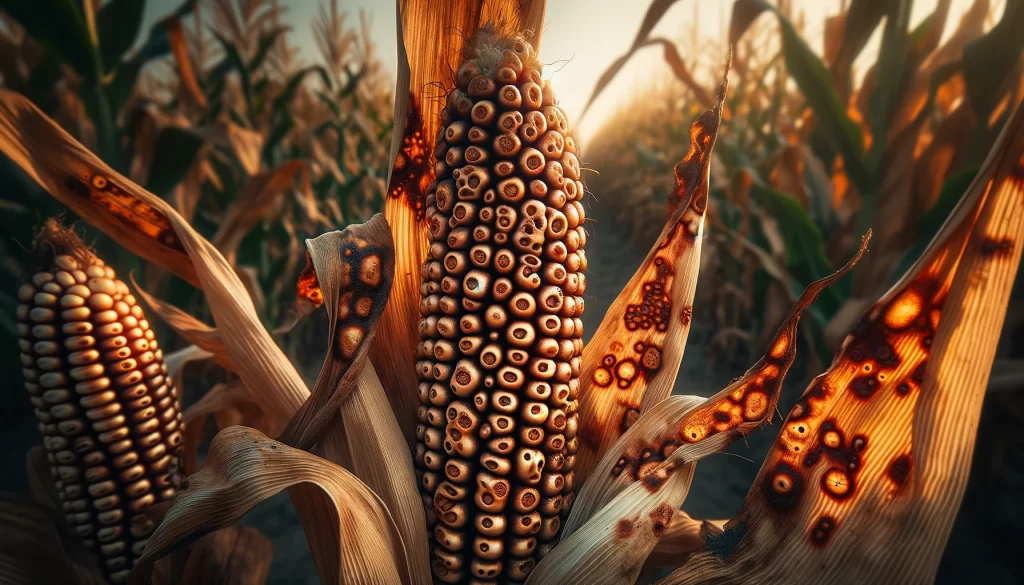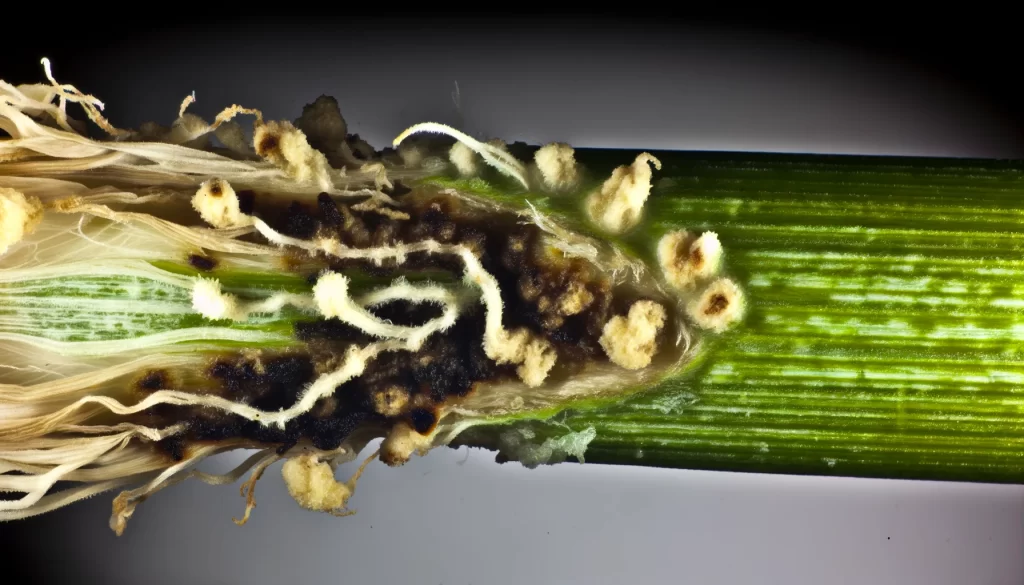Diseases affecting corn cultivation can be caused by a variety of pathogens, including fungi, bacteria, viruses, nematodes, and other microorganisms. These diseases can have a significant impact on crop yield and quality if not properly controlled.

Here are examples of some common diseases caused by each type of pathogen:
Diseases caused by fungi
Corn rust (Puccinia sorghi): This fungal disease manifests as brown-orange pustules on corn leaves. It can reduce crop yield if not properly controlled.

Leaf spots (Cercospora zeae-maydis and Helminthosporium maydis): These fungal diseases cause brown or black spots on corn leaves, which can reduce the plant’s photosynthetic capacity and affect yield.

Corn ear rot (Fusarium spp. and Colletotrichum graminicola): These fungal diseases can affect corn ears, causing rotting and decomposition of grains, resulting in loss of quality and yield.

Corn wilt (Fusarium verticillioides and Fusarium graminearum): These fungal diseases can cause wilting in corn plants, affecting their growth and development.
Diseases caused by bacteria
Bacterial leaf spot (Xanthomonas campestris pv. zeae): This bacterial disease manifests as necrotic lesions on corn leaves. It can reduce crop yield if not properly controlled.

Soft rot of stem (Erwinia spp.): This bacterial disease can cause rotting of corn stems, weakening the plants and affecting their ability to support ears.

Diseases caused by viruses
Corn chlorotic mottle (Maize chlorotic mottle virus): This virus causes chlorotic spots on corn leaves, which can merge to form rings. It can reduce crop yield if the infection is severe.
Corn mosaic (Maize dwarf mosaic virus): This virus can cause a mottled or mosaic pattern on corn leaves, as well as deformations and reduced plant size.

Corn streak virus (Maize streak virus): This virus can cause leaf curling and distortion in corn leaves, as well as discoloration and reduced ear size.
 AgronoBlog – Agriculture Blog
AgronoBlog – Agriculture Blog 


